How To Choose The Best Squat Wedge
Author:
Reviewed by:
(Certified Nutritionist, S&C specialist, M.Sc.Eng. Biotechnology)
Unlock your full potential by engaging with our experts and community! Have questions about your fitness journey or looking for expert advice on weightlifting techniques? Don’t hesitate — leave a comment below and Oleksiy Torokhtiy will provide a personalized answer and insights to help you reach your goals.
Torokhtiy is reader-supported. Some links are affiliate links, and we may earn a commission at no extra cost to you. See our disclosure page for details.
Squats are the cornerstone of a robust fitness program, touted by enthusiasts and experts alike for their unparalleled efficiency in building strength. However, achieving the perfect squat form is not without its challenges.
This is where the best squat wedge enters the gym and is a useful tool, to elevate the heel and enable athletes to deepen their squats, improve posture, and mitigate risk of injury.
The best squat wedge is typically an adjustable one offering a range of angles to suit individual needs for flexibility and drill variation, made from durable materials with a non-slip surface for safety and performance.
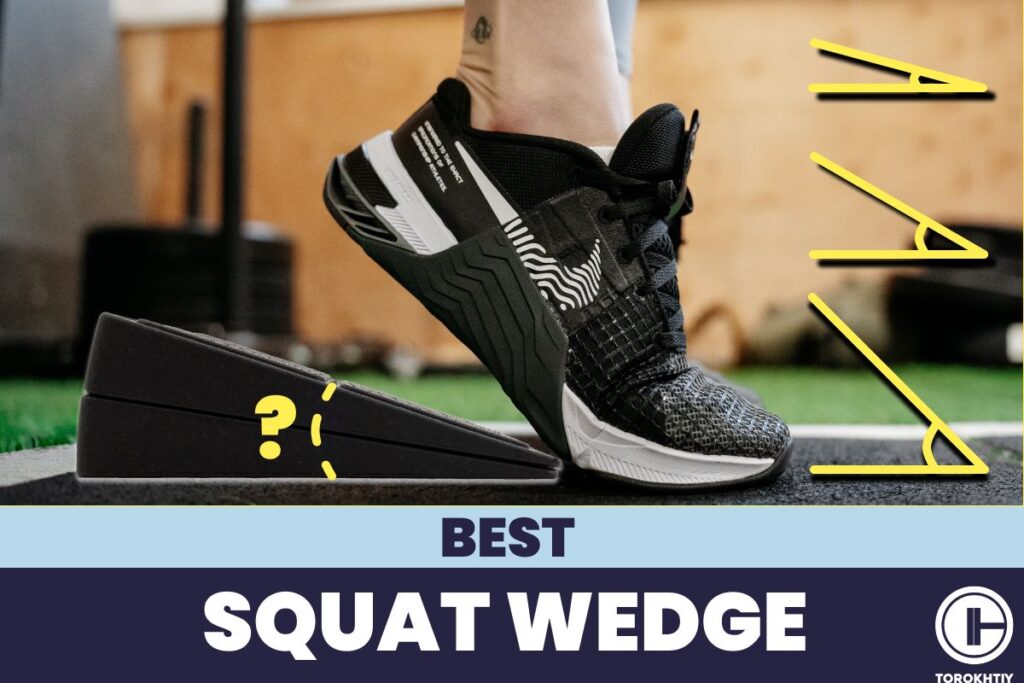
The squat wedge benefits are manifold. They cater to those who strive for perfection in their technique, while accommodating individuals who face limitations due to previous injuries or flexibility. By allowing for greater range of motion, these wedges help target muscle groups more effectively, which can lead to faster strength gains and more balanced development of the lower body.
As we delve into the nuances of squat wedges also known as calf stretch board, this article aims to be your comprehensive guide, highlighting the pivotal role they played in training.
From novices embarking on their fitness journey to seasoned gym-goers, looking to enhance their routine, understanding the functionality and proper usage of squat wedge is essential. We will explore the various designs, delve into their distinct pros and cons and navigate the consideration one must weigh when choosing the best squat wedge for their personal goals.
Squat Wedge 101
At its core, a squat wedge is an ergonomically designed incline that supports the heels during lower body exercises. By elevating the heel, the wedge alters the ankles angle, reducing the demand for extreme flexibility, and allowing for a deeper, more effective squat.
This piece of equipment is essential for those looking to enhance their squat technique and build a solid foundation for other specific and complex movements.
The squat wedge benefits are extensive and varied. For beginners, it encourages a more upright torso during squats, which reduces the strain on the lower back and focuses the workload on the intended muscle groups: the quads, glutes and hamstrings.
This adjustment in form can dramatically improve muscle activation, and lead to more significant strength gains over time.
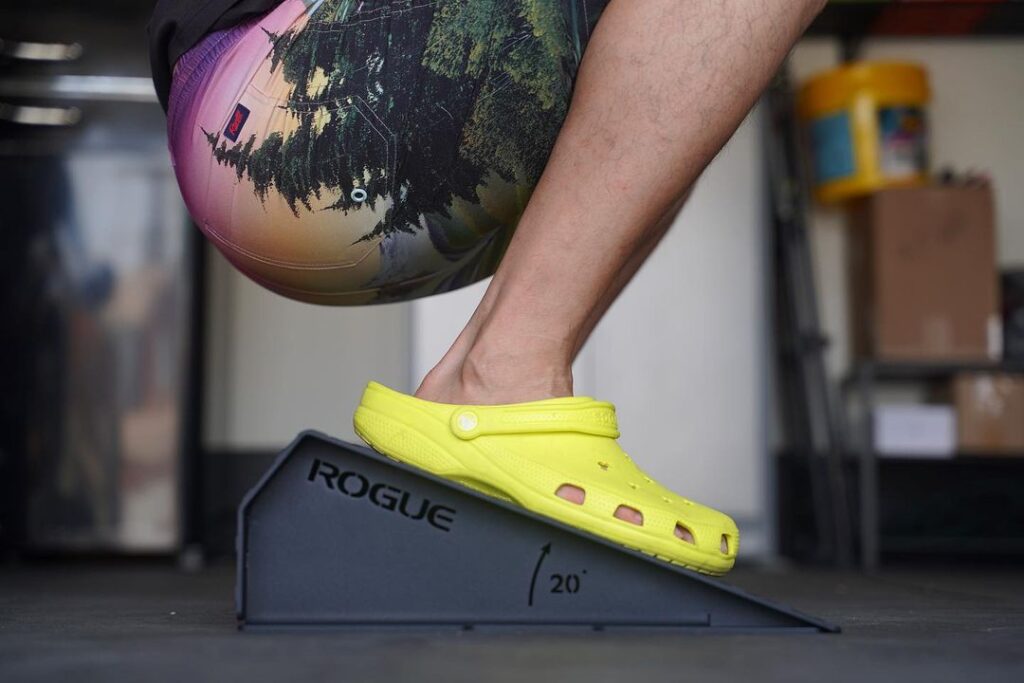
In addition to optimizing squat form, squat wedges are also beneficial for those with limited ankle mobility, and/or tight calves. By compensating for these common issues, the wedge allows these individuals to squat more deeply, while maintaining proper form and without compensatory bending at the waist which can lead to back strain.
Moreover, the exercise slant board – another term of squat wedge, can be used for a variety of other exercises beyond squats, such as Bulgarian split squats, heel elevated push-ups, and even some calf stretching, making it a versatile addition to any workout.
The incline provided by the wedge can also help in the development of proprioception and balance, as it requires the exerciser to engage, stabilizing muscles more actively.
4 Types of Squat Wedges
The market is replete with the variety of squat wedges, each boasting unique designs and materials to suit different training needs and preferences.
1. Wooden Slant Board
The wooden slant board is a classic choice revert for its sturdy construction and timeless appeal. Wooden boards tend to be stable and durable offering a solid platform that doesn’t easily slip during execution. The organic feel of the wood can also be more appealing to those who prefer natural materials in their training equipment.
2. Synthetic Squat Wedge
On the other hand, synthetic squat wedges, often made from high-density foam or plastic, offer a lightweight alternative that is easier to transport and store.
These materials often come with textured surfaces to enhance grip, and their resilience to moisture makes them suitable for high-intensity workouts or gym environments where they might be subject to sweat and cleaning products.
When considering the design one major distinction lies between a fixed angle slant board and adjustable slant board.
3. Fixed-Angle Board
A fixed-angle board is typically set at a standard incline that suits most people for basic squat exercises. These boards are often more affordable and straightforward to use with no set up required.
4. Adjustable Slant Board
Adjustable slant boards, however, boast versatility as they can be modified to various angles to cater to different exercises, stretches, and individual flexibility levels.
This adjustability makes them a favorite among rehab professionals and trainers, who work with clients of their abilities. The option to adjust the incline allows for a progressive training approach, gradually increasing the challenge as flexibility and strength improve.
However, the adjustability comes with its cons. Adjustable squat wedges can be more expensive and depending on the design more complex to set up. They may also have moving parts that can wear out over time, potentially leading to maintenance issues.
The choice between a wooden slant board and a synthetic one or between a fixed and an adjustable slant board largely depends on personal preferences, workout goals and budget. A wooden board may offer a more traditional and aesthetic feel, while a synthetic adjustable board provides practical versatility.
Both types have their place in fitness gyms, and the optimal selection is one that aligns with the user’s specific requirements, ensuring the squat wedge becomes an invaluable asset in their training.
Follow us!

Free!
Get a 2-week Weightlifting Program as a bonus for the subscription to kickstart your training plan!

Free!
Choosing the Best Squat Wedge for Your Needs
Selecting the best squat wedge for your fitness journey is not merely about buying the first or the cheapest option available.
It involves considering several factors to ensure that the wedge you choose aligns with your comfort, preferences, training goals, and even the type of footwear you use. Here we outline the critical criteria that will guide you in choosing the best slant board for squats.
1. Durability
Firstly, material durability is paramount. Whether you opted for a wooden slant board or a synthetic one, ensure that it can withstand the rigors of your workout routine without warping or degrading. Stability is another essential factor – your squat wedge should provide a firm non-slip surface to maintain form and safety during use.
2. Incline Options and Ergonomics
Another key consideration is the incline. An adjustable slant board might be preferable if you plan to progress in your training, intensity, or share the equipment with other users of varying flexibility levels.
However, if simplicity and reliability are your priorities, a fixed-angle wedge might be the best fit. Ergonomics shouldn’t be overlooked. The wedge should comfortably accommodate your foot size with a surface design that supports natural foot positioning. Some wedges also offer features like heel cups that can enhance the squatting experience.
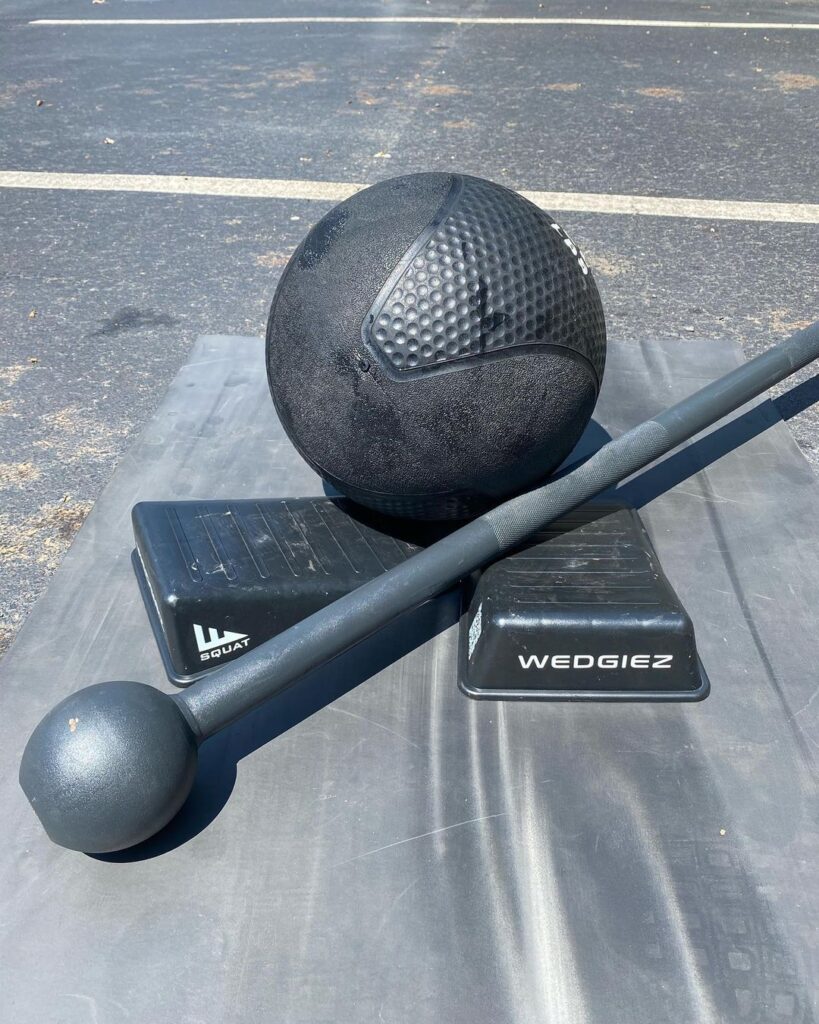
3. Portability
Portability and ease of storage may also influence your decision. If you have limited space or travel frequently, a lightweight, compact wedge could be the best squat wedge for your needs.
Our best choice is Rogue Squat Wedge. Available in three sizes and six different angled inclines, Rogue’s Squat Wedges are the most durable and dynamic on the market—manufactured in the USA from heavy-duty 7-gauge and 11-gauge steel and optimized for stability.
Rogue Squat Wedges are available in three width options: 8.5” (sold as a pair and effective for single foot movements), 20” (medium range for two feet), and 30” (widest stance option for two feet).
All three sizes come in (6) different angles, as well: 5°, 10°, 15°, 20°, 25°, and 30°. The greater the incline, the more quad dominant the squat will be. For maximizing squat depth, many athletes will want to select a wedge in the 10-20 degree range.
For gyms with multiple wedges, Rogue laser cutouts and degree indicators help coaches and trainers quickly identify which angles are in use to better assist their athletes.
Squat Wedge Mechanics
The use of squat wedge under your heels changes the dynamic of the traditional squat by altering the lower legs angle relative to the floor. This modification can significantly reduce the mobility demands on the ankle joint, making the squat movement more comfortable and effective.
When learning how to use a squat wedge, begin by positioning it on a flat surface. Step onto the wedge with your heels elevated and your toes on the ground, standing with your feet at shoulder-width apart or in your common squat stance.
The incline of the wedge should allow you to squat deeper while keeping your heels down, which is often a limitation for those with tight calf muscles, or limited ankle dorsiflexion.
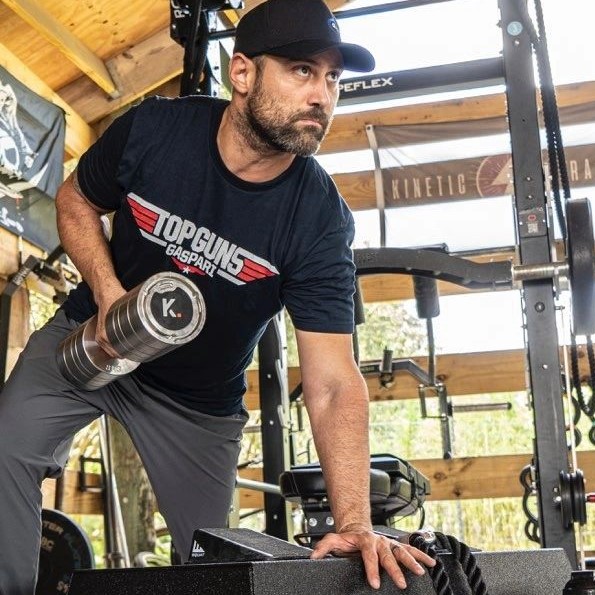
The use of squat wedges can correct form and posture during squats. By elevating the heels, it naturally encourages a more vertical spine, reducing the forward lean and often accompanies regular squats, especially in those with less flexibility.
This positioning only enhances the focus on the quadriceps, but also minimizes unnecessary stress and lower back.
In addition to traditional squats, a variety of exercises can benefit from the incorporation of squat wedges. For example, performing Bulgarian split squat with the front foot elevation allows for greater depth and a more significant stretch of the hip flexors.
Similarly, a squat wedge can be a valuable tool for calf raises, where the incline can increase the ROM and intensify the stretch and contraction of the calf muscles.
🔻GET A FREE PROGRAM DEMO: 12 Week Squat Program by Oleksiy Torokhtiy
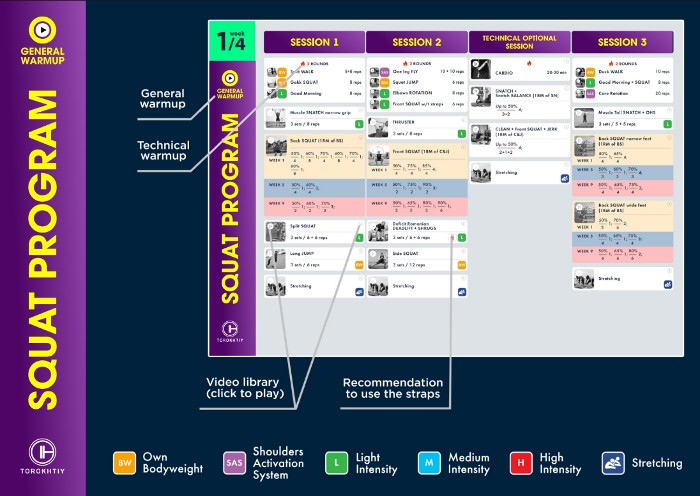
Do you want to double your squat strength? In just 12 weeks, you’ll be able to boost your squat results.
Enter your details and get a free demo (1 free week) of the squat program straight into your inbox.
Incorporating Squat Wedges into Workout Routine
Incorporating a workout wedge into your training process is a strategic way to prevent plateauing and enhance the effectiveness of your workouts.
For novices a squat wedge can serve as a supportive tool, facilitating correct form and enabling a full ROM from the very beginning. It can help build the foundation for a solid squat by improving posture alignment and muscle engagement.
1. Beginners` Tips
For beginners, start with basic squats to become accustomed to the feel of the wedge. As you become comfortable, use the slant board for calf stretches before, and after workouts to reduce the risk of injury and improve flexibility.
2. Pro`s Tips
Advanced fitness enthusiasts and athletes can use squat wedges to intensify workout. Incorporate them into split squats, lunges, and one leg squats for a challenging variation that targets the muscles differently.
The elevated heel position provided by the wedge can also increase the depth of each squat, thereby engaging the glutes and hamstrings more intensely.
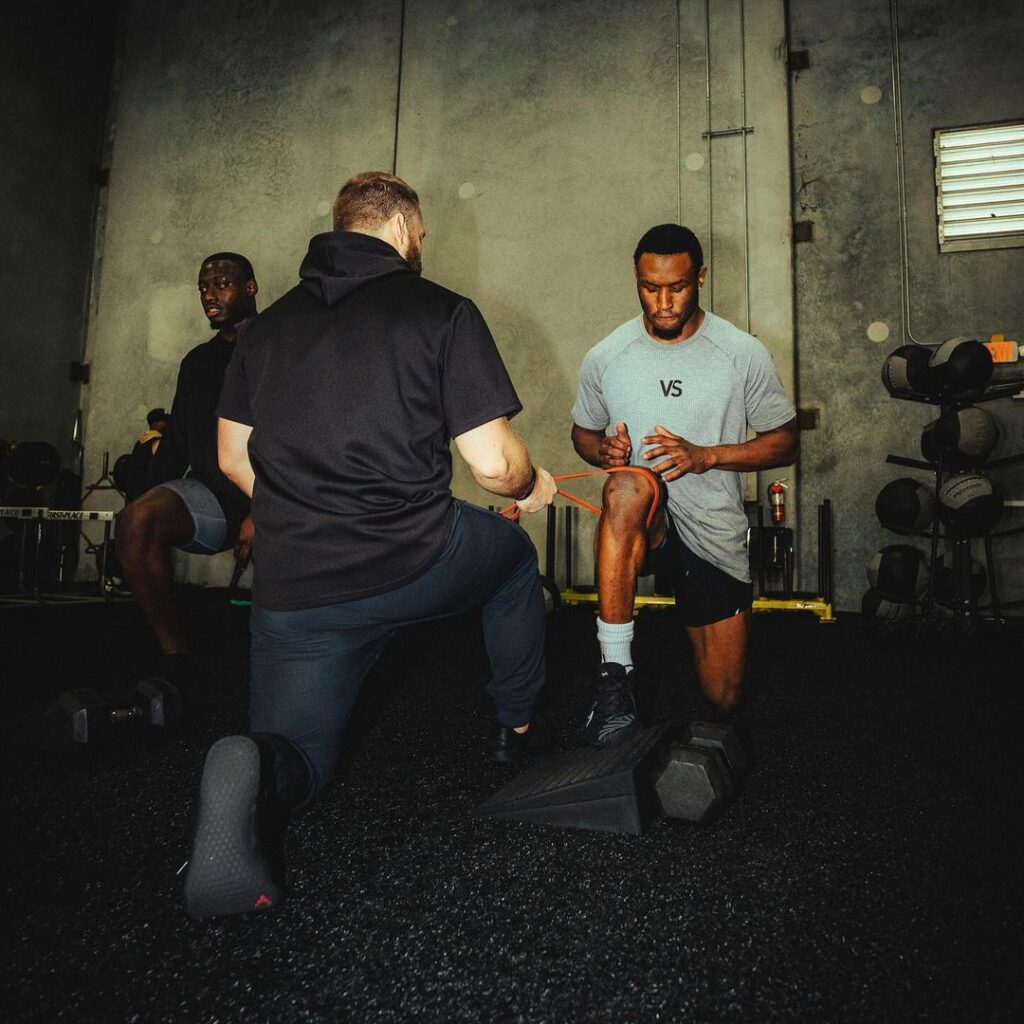
Additionally, use the wedge for calf raises, stepping both the ball and heel of your foot on top of it to create an increased range of motion. This added stretch and contraction during calf raises can lead to more significant strength and muscle gains.
Furthermore, the squat wedge can be utilized in dynamic movements like plyometrics. For more advanced athletes, try the wedge for squat jumps or step ups, which can improve explosive power and stability. The inclined surface encourages a natural foot alignment, reducing strain on the ankles and knees during these high-impact exercises.
Common Mistakes and Misconceptions
When it comes to slant board squats, there are a few common mistakes and misconceptions that can lead to injury and hinder progress.
❌ This is not Panacea
A prevalent misconception is that squat wedges can fix any squat-related problem. While they are valuable tools, they are not a panacea. Proper squat technique still requires attention to overall form and alignment.
❌ Over-Reliance
A common error is over-reliance on the squat wedge. Some users may develop a dependency on the wedge for depth in their squats rather than working on their natural ankle flexibility and mobility.
It’s important to use the slant board for squats as a supplement to a well-rounded strength and conditioning program. That also includes a comprehensive mobility load.
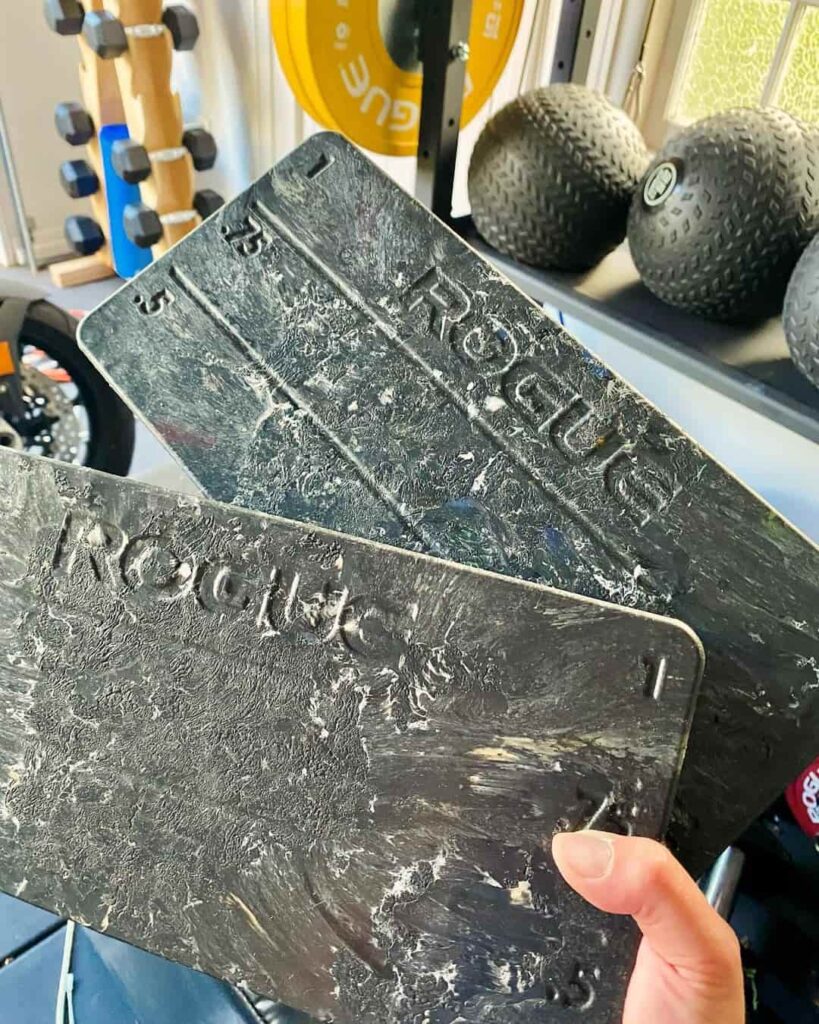
❌ Improper Alignment
Another frequent mistake is improper foot placement. The heels should be firmly planted on the wedge with the toes, pointing slightly outward, not excessively turned out, which can place undue stress on the knees.
Also, users should avoid letting their knees cave inward during the moment, a common issue that can be mitigated by engaging the glutes and driving the knees outward.
Correcting these mistakes involves mindful practice, and possibly the guidance of a professional coach. Remember, the squat wedge is a tool to enhance your squatting capabilities not a substitute for technique. Use it wisely and in conjunction with a holistic approach to your fitness program for the best outcomes.
4 Advanced Techniques and Variations
For those who have mastered the basics of the workout, wedge can be a gateway to advanced techniques that bring a new level of complexity and intensity to your routine. Experienced users can leverage the adjustable slant board to incorporate progressive overload and explore a wider range of movements into their program.
1. Pistol Squat
One such advanced exercise is the pistol squat or single-leg squat, performed with one foot on the wedge. This variation not only demands significant balance and strength, but also challenges the stability of the knee, hip and ankle joints on the work side.
The elevated heel position allows for a deeper movement while maintaining a vertical shin, reducing the risk of lean forward and lower back strain.
2. Overhead Squat
Another challenging variation is the overhead squat on the wedge. Holding a weight overhead while squatting requires excellent stability and mobility in the shoulders and thoracic spine and squat wedge assists in maintaining proper lower body alignment throughout the movement.
3. Plyometrics
Adding explosive movements, such as squat jumps or weighted squat jumps onto the wedge can significantly enhance power development. The inclined plane of the wedge will challenge the muscles to adopt the changes of force angles, thus improving your explosive capabilities.
4. Circuits
For those looking to intensify their workouts further, try using the wedge in a superset of circuit format. Move from squat wedge exercise to another lower body exercise without the wedge, such as lunges or deadlifts to challenge the muscles, and the ability to adapt to different demands rapidly.
By integrating these advanced variations and techniques, the workout wedge becomes more than just a tool for improved squatting. It’s a component of a dynamic and comprehensive strength program. Whether you are looking to increase power, build muscle or add variety to your routine, the squat wedge offers endless possibilities to push your limits.
FAQ
What Degree Wedge is Best For Squats?
The best degree for a squat wedge typically ranges from 20° to 30°, allowing most individuals to achieve a deeper squat with proper alignment and without excessive stress on the ankles or knees.
Is 90 Degree Squat Enough?
The 90° angle between the thighs and calves in squats is considered sufficient for most people to gain benefits from the exercise, although some fitness enthusiasts and athletes may aim for a greater range of motion for increased muscle activation.
Conclusion
To sum up, the squat wedge is not just a piece of equipment. It’s a transformative addition to a holistic fitness approach. With a right stretch board or exercise slant board we have seen how it can greatly enhance the depth and effectiveness of squats, offer valuable means to stretch and strengthen the calves and even serve as an aid to other drills.
Its benefits span from improving posture and squat mechanics to prevent injuries and breaking through the training plateau. Did we miss anything? Let us know in the comment section! Join the conversation now!
Also Read:
- Front Squat Grip Secrets – Techniques & Tips
- Bad Squat Form: 7 Common Squat Mistakes Explained
- Are You Leaning Forward During Squats? Here’s the Fix
- 9 Harder Squat Variations To Try At Least Once
- 8 Squat Cues For Perfect Form And Strength
- 14 Best Back Squat Alternatives Trainers Recommend
- 12 Exercises To Improve Squat Strength & Form
- 11 Squat Accessory Lifts to Boost Your Squat Results
References:
- Yoo WG. Comparison of the hamstring/quadriceps ratio in females during squat exercise using various foot wedges. J Phys Ther Sci. 2016 Aug;28(8):2379-80. doi: 10.1589/jpts.28.2379. Epub 2016 Aug 31. PMID: 27630437; PMCID: PMC5011601.
- Charlton JM, Hammond CA, Cochrane CK, Hatfield GL, Hunt MA. The Effects of a Heel Wedge on Hip, Pelvis and Trunk Biomechanics During Squatting in Resistance Trained Individuals. J Strength Cond Res. 2017 Jun;31(6):1678-1687. doi: 10.1519/JSC.0000000000001655. PMID: 28538320.
- Pejhan S, Denroche SK, Frew GJ, Acker SM. Effects of Knee Savers on the quadriceps muscle activation across deep knee bending postures. Appl Ergon. 2019 Oct;80:193-199. doi: 10.1016/j.apergo.2019.05.016. Epub 2019 Jun 18. PMID: 31280805.
- Mackey ER, Riemann BL. Biomechanical Differences Between the Bulgarian Split-Squat and Back Squat. Int J Exerc Sci. 2021 Apr 1;14(1):533-543. PMID: 34055144; PMCID: PMC8136570.
- Ramos-Campo DJ, Andreu Caravaca L, Martínez-Rodríguez A, Rubio-Arias JÁ. Effects of Resistance Circuit-Based Training on Body Composition, Strength and Cardiorespiratory Fitness: A Systematic Review and Meta-Analysis. Biology (Basel). 2021 Apr 28;10(5):377. doi: 10.3390/biology10050377. PMID: 33924785; PMCID: PMC8145598.
- Preview photo is made by Torokhtiy Media Team.
Why Trust Us?
With over 20 years in Olympic weightlifting, strength training, nutrition coaching, and general fitness our team does its best to provide the audience with ultimate support and meet the needs and requirements of advanced athletes and professional lifters, as well as people who strive to open new opportunities and develop their physical capabilities with us.
By trusting the recommendations of our certified experts in coaching, nutrition, and sports training programming, as well as scientific consultants, and physiotherapists, we provide you with thorough, well-considered, and scientifically proven content. All the information given in the articles concerning workout programming, separate exercises, and athletic performance, in general, is based on verified data.
The product testing process is described in more detail here.
Author: Oleksiy Torokhtiy
Olympic Weightlifting Champion, PhD in Sport Science
Best Results: Snatch – 200 kg,
C&J – 240 kg
Oleksiy Torokhtiy is a professional athlete boasting 20 years of experience in Olympic weightlifting. With multiple European and World titles under his belt, he has showcased his prowess in two Olympic Games (Beijing 2008 and London 2012). Upon concluding his illustrious career, Oleksiy dedicated himself to coaching. By 2022, he had conducted over 200 weightlifting seminars worldwide. He is the visionary behind an international sportswear and accessories brand known for its motto, “Warm Body Cold Mind.” Additionally, he is an esteemed author and the creator of a series of training programs and eBooks.
Reviewed by: Jacek Szymanowski
Certified Nutritionist,
M.Sc.Eng. Biotechnology
Performance architect,
Strength and Conditioning Specialist
With over 30 years of fighting experience, specialization in nutrition coaching for athletes, and expertise in metabolic health and dietary strategies, Jacek offers a comprehensive approach to optimizing your performance and well-being. Backed by a Master of Science degree in Biotechnology, Jacek remains at the forefront of scientific advancements, ensuring that his coaching is always evidence-based and up-to-date.




Still have questions after reading our article? Unlock your full potential by engaging with our experts and community! Don’t hesitate — leave a comment below and Oleksiy Torokhtiy will provide a personalized answer and insights to help you reach your goals.